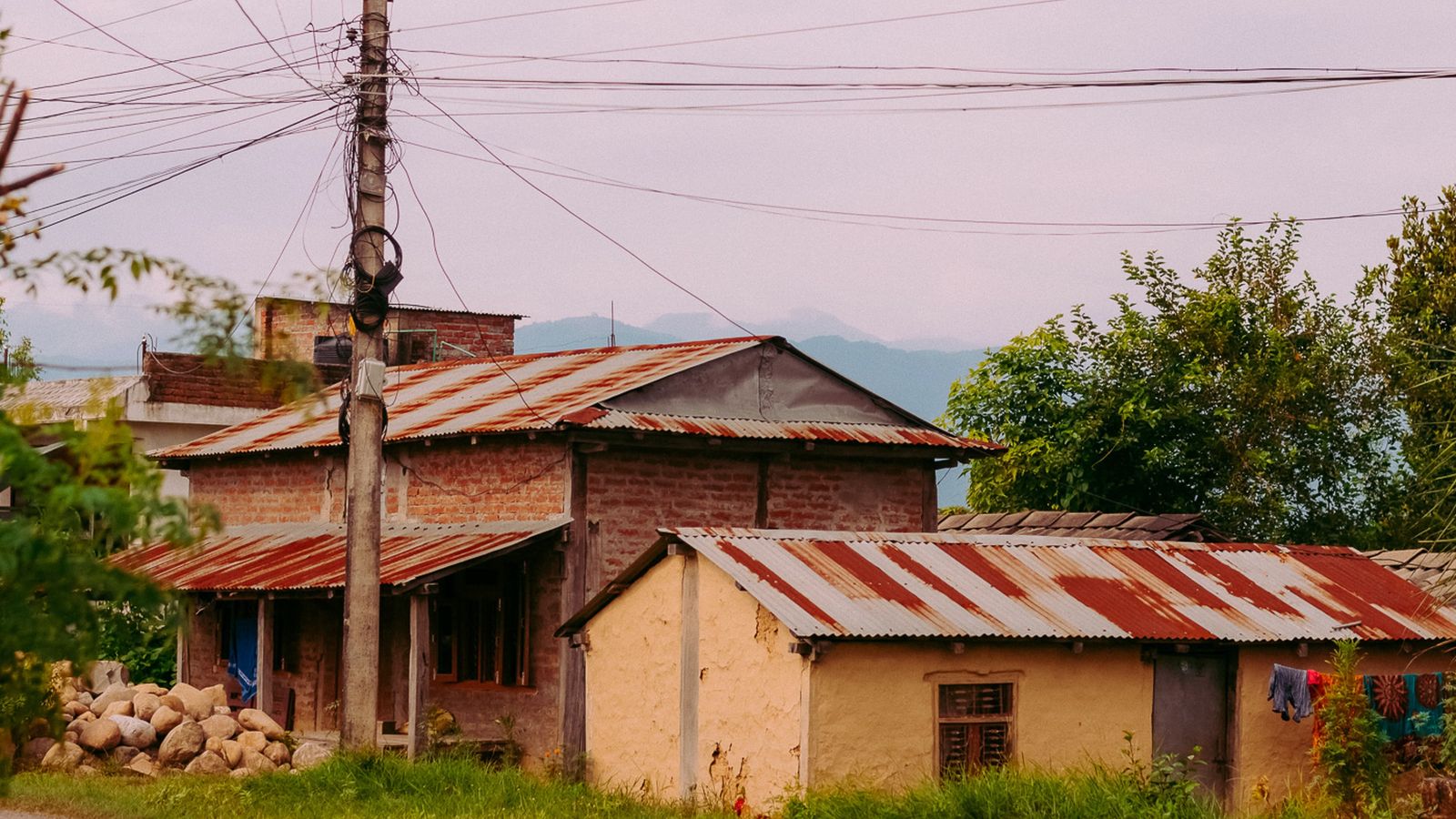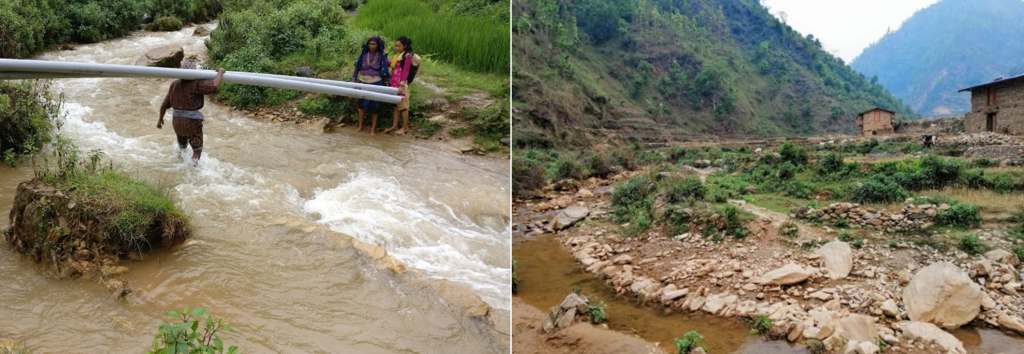
- Date
- 7th December 2020
- Categories
By Will Clements (University of Bristol) and Surendra Pandit (KAPEG).
The Nepal Electricity Authority aims to provide electricity for all by the year 2022. Large scale hydropower projects are set to create a surplus of power generation over the coming years, which the government is planning to utilise by promoting electric vehicles and, importantly, electric cooking. In rural areas, where 66% of households use firewood for cooking, over 3,300 communities are powered by micro hydropower (MHP) mini-grids. MHP generates energy 24/7, much of which is dumped during off-peak times. However, in contrast to the increasing capacity of the national grid, MHP systems range from 10-100 kW, and often electric cookers draw 1-2 kW each. In villages with hundreds and even thousands of residents connected to the mini-grid, how feasible is electric cooking as a community-wide solution?

Since 2018, an international collaboration between the People Energy and Environment Development Association (PEEDA),Kathmandu Alternative Power and Energy Group (KAPEG), the University of Bristol, and MECS has been working to enable the widespread adoption of modern energy for cooking in rural Nepal. We have completed three electric cooking projects which trialled electric cookers in communities in Rukum and Solukhumbu, using MECS cooking diary methodology and MHP system data collection to understand the social and technical aspects of introducing electric cooking. The most recent project in Solukhumbu, Eastern Nepal, was supported by the MECS TRIID Challenge Fund and is summarised in this report. Further information on these projects can be found in this journal paper and blog posts from Bristol and PEEDA.We are now starting work for our next project on electric pressure cookers (EPCs) for Nepal, thanks to the MECS ECO Challenge Fund. The key lessons from our work so far are summarised here:
Willingness to experiment is key to transitioning to electric cooking. Staple dishes including dal and rice were easy to cook on induction hobs but some participants had difficulty with flatbreads and meat, often stacking electricity with wood and LPG for these dishes. Meat, which is fried or cooked in pressure cookers as part of curries and stews, is cooked less frequently than the staple dishes, and so some participants had less practice and success adapting to the new cooker and cookware for it, finding it easier to stir the ingredients in traditional round-bottomed pans on wood stoves. However, flatbreads were the most difficult food to cook effectively, as the induction hob tended to burn the middle or undercook the edges if the power setting was too high or flatbread too thick. Even with extra training on flatbread cooking methods and a thicker pan to better distribute heat, it was clear that only those willing to experiment and get used to the new technology made the switch to electricity for flatbread cooking. However, power outages also played a part in discouraging electric cooking.

Everyone cooks at around the same time as peak electricity demand. This compounds the problem of high power cooking in limited capacity systems like MHP mini-grids. In each study there was only just enough spare power in the mini-grid for all ten or fifteen participating households to cook, and the total cooking load often led to brownouts and blackouts and undercooked food, which in turn led to fuel stacking.
Fuel stacking is common between firewood, LPG and electricity. Many rural Nepalis rely on heat from their wood stoves for warmth during the winter months, especially for elderly family members. Wood stoves are also required for cooking large quantities of animal food and milk, although often separate stoves located outside are used. Furthermore, less power is generated in the dry season due to reduced flow in the river compared to the intense rainfall of the monsoon season, increasing the frequency of power outages. Finally, as well as preferring wood or LPG for certain dishes, some participants reported fuel stacking to save time by cooking two dishes at once. However, LPG usage is affected by availability and cost.

Electric cookers enable concurrent cooking. Before the introduction of electric cookers, most households would cook dishes consecutively on their wood stoves to save firewood, rather than lighting a separate stove. However, after the transition in Solukhumbu, most households cooked concurrently to varying degrees, either on electric and wood/LPG stoves, or purely with electricity using the induction hob and rice cooker at the same time. The latter electric combination was particularly common for households with both electric cookers, whereas levels of concurrent fuel stacking varied between households, suggesting a trade-off between saving time and keeping the kitchen smokeless or keeping LPG costs down.

Keeping food hot is important. Cooking concurrently also allows enables people to eat just when their food is ready and hot, whereas cooking everything using one electric cooker would leave one or two dishes cold unless kept warm on another stove. One participant in Solukhumbu asked for something in which food could be kept warm. Therefore, in our upcoming MECS ECO project we are planning to trial EPCs with an extra cooking pot so that food can be kept warm, which will also remove the need to empty and clean the EPC between cooking each dish, enabling an easier and more effective cooking experience.
Batteries can reduce peak demand. MHP energy could be stored during off-peak times to spread the cooking electricity demand throughout the day. In the MECS TRIID project we found that up to 500 households could cook with electricity from centralised or household level battery storage if the spare energy in the mini-grid was used to its full potential and the MHP produced its nominal 100 kW. However, for centralised storage in the MHP powerhouse this would require a huge, expensive battery bank, and at the household level, intelligent charging control systems. Battery cooking in rural Nepali is possible, but further work is required on the technical challenges and high initial cost is a barrier to implementation in similar communities.

EPC revolution? EPCs could revolutionise the Nepali cooking context while enabling greater uptake of electric cooking in limited capacity grids. The higher the efficiency of a cooking device, the lower the power required for effective cooking, the smaller the central or household battery required, and the lower the initial and running costs of the cooking system. Therefore, our MECS ECO Challenge Fund project looks to understand the suitability of EPCs for Nepali households.Most Nepali cooks are already familiar with manual pressure cookers and rice cookers, suggesting EPCs could be well received and play a primary role in Nepali cooking. The project will include a Nepali EPC market assessment, the creation of a Nepali eCookBook, and a six-month EPC intervention study in on- and off-grid communities totalling 160 households.
Laboratory tests on EPC cooking conducted in the PEEDA office have already shown that most of the key Nepali dishes can be cooked on EPCs, although flatbreads in particular require more investigation, and understanding how to fry vegetables and spices for dal in an EPC could be crucial to acceptance. Further information on the laboratory experiments can be found in this presentation by PEEDA, including comparison of induction hobs and EPCs for Nepali cuisine.
The collaboration continues to work to enable electric cooking in Nepal, where EPCs and energy storage could be crucial in fulfilling the country’s ambition of a total transition to clean cooking.